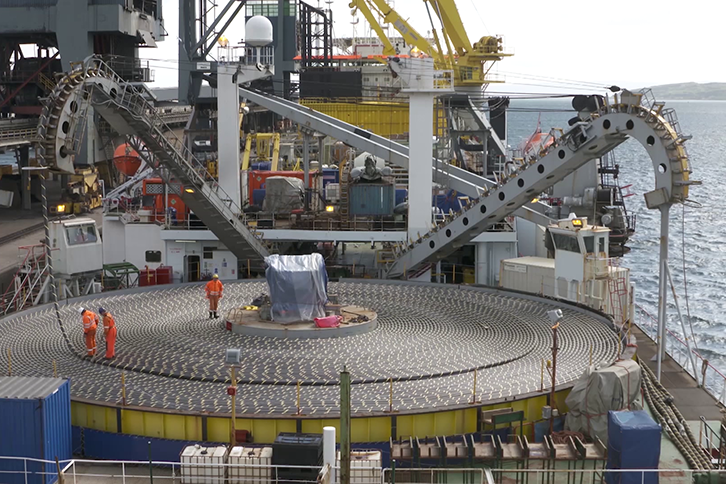Britain’s biggest current network improvement project, the Eastern Green Link 2 subsea cable running for 291 miles under the North Sea, has secured planning consent from all relevant Scots and English authorities.
Eastern Green Link 2 (EGL2) is a 525kV, 2GW high voltage direct current (HVDC) subsea electricity mega-connector, linking Peterhead in Aberdeenshire to Drax in north Yorkshire. Joint backers National Grid and SSEN Transmission say it will take five years to build, and could be taking current by 2029.
Planning consent has now been granted for all onshore and offshore elements of the project, including new converter stations and onshore and offshore cables.
As a joint venture between the two transmission operators, EGL2 will be the longest high voltage direct current (HVDC) cable in the UK.
It is rated nominally to power more than two million homes. Its backers say it is essential to meet the UK’s Net Zero commitments and deliver a cleaner, greener and more secure energy future.
Today the parties confirmed EGL2 had secured planning approval from three local authorities, plus from England’s Marine Management Organisation and from Marine Scotland, its equivalent north of the border.
Ofgem’s approval is EGL2’s last hurdle. Its backers say it is essential to meet the UK’s Net Zero commitments and deliver a cleaner, greener and more secure energy future.
Once complete, EGL2 will run from a new converter station and landfall point at Sandford Bay, Peterhead, under the North Sea. Landfall in England will be at Fraisthorpe, on the East Yorkshire coast. Once onshore, it will run underground to a new converter station next to pellet-burning Drax power station near Selby.
Planning permission in principle was granted by Aberdeenshire Council in May last year for the HVDC converter station and in February this year for a pylon compound joining the high-voltage underground cable to the overhead line.
Marine licences were secured from both the Marine Management Organisation and Marine Scotland on 28 July and 5 May 2023 respectively for EGL2’s 436km subsea cable.
East Riding of Yorkshire Council granted National Grid Electricity Transmission full planning permission on 3 May 2023 for the majority of the project’s onshore underground cable.
Earlier this month North Yorkshire Council consented for a new HVDC converter station and stretch of underground cable adjacent to Drax, the former coal-burning power plant. Drax burned its last coal on a regular commercial basis in 2018.
Thanking EGL2’s supporters and consultees, deputy project director Sarah Sale said:
“We are delighted that our plans for the onshore and offshore elements of our project have been approved by all local planning authorities and marine licencing organisations. What was particularly pleasing to hear, was the support for the project and its purpose from a number of those planning authorities.
“This renewable electricity superhighway is vital in supporting the UK’s transition to net zero and decarbonisation and we’re thrilled to be making such a significant contribution with the largest electricity transmission reinforcement project in the UK.”
Construction of EGL2 is expected to begin in 2024, with a targeted operational date of 2029.
Three further subsea links between Scotland and England look set to follow, under National Grid’s ‘Great Grid Upgrade’, the operator’s multibillion investment in the largest overhaul of English & Welsh transmission in generations
In addition, proposals in the Humber region and East Anglia including a further subsea link between Suffolk and Kent.




